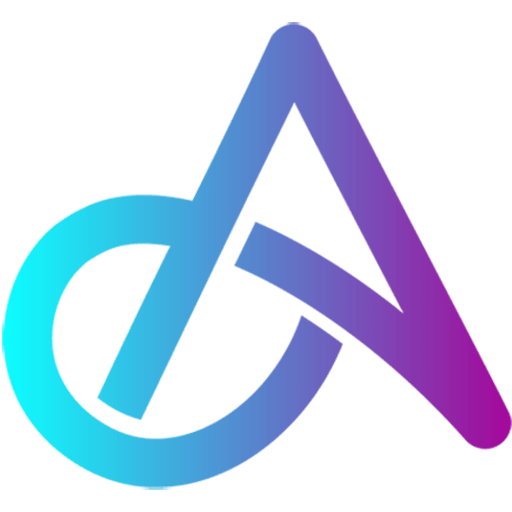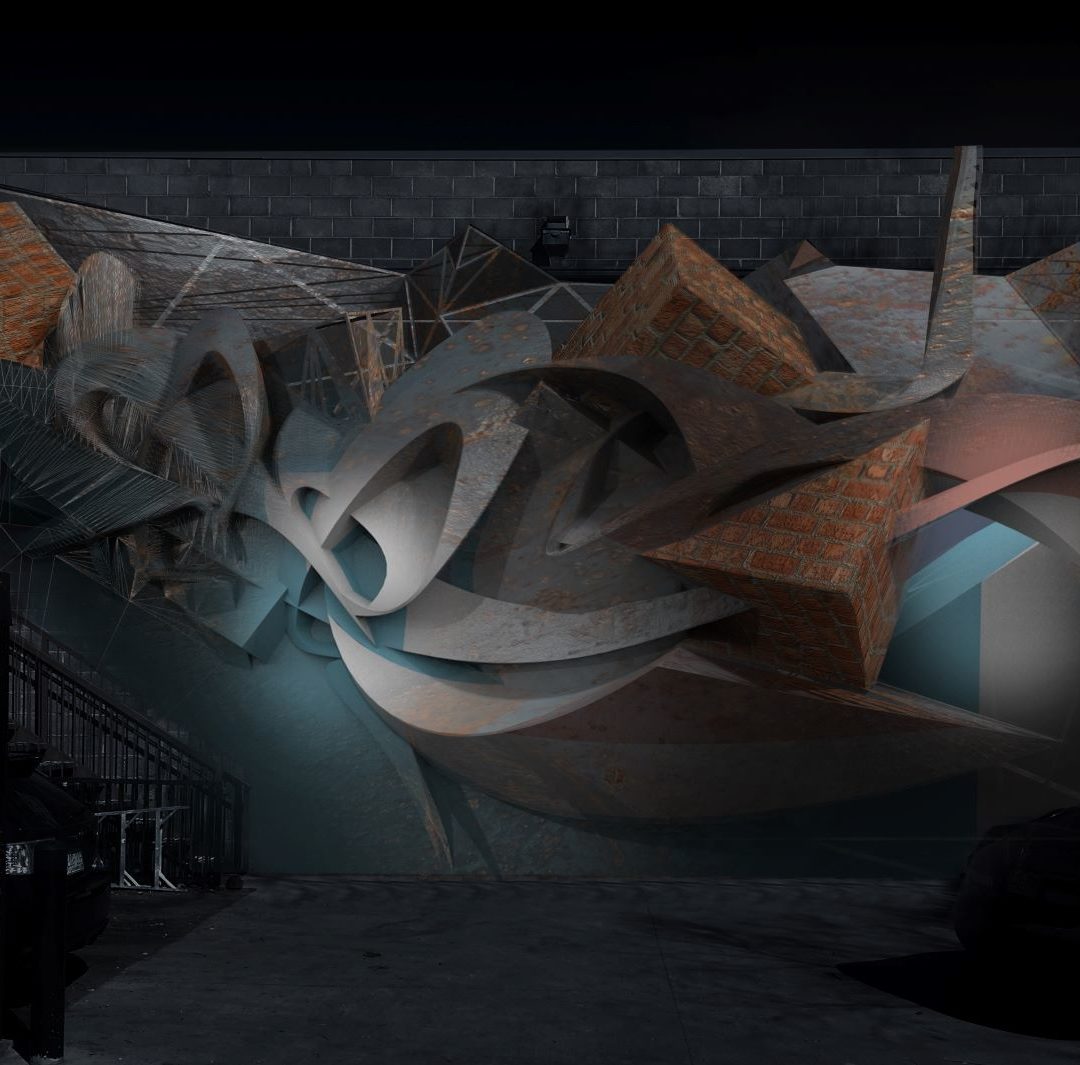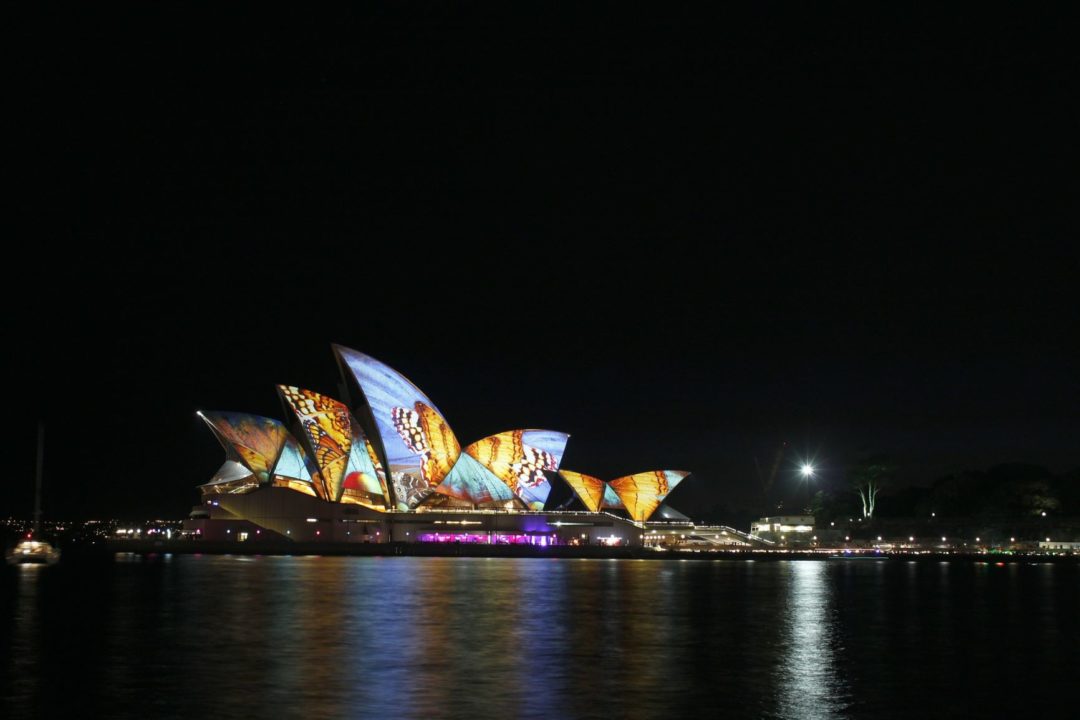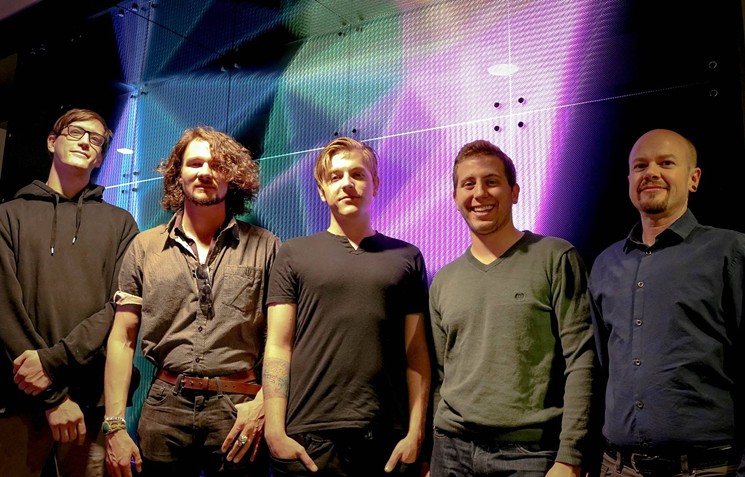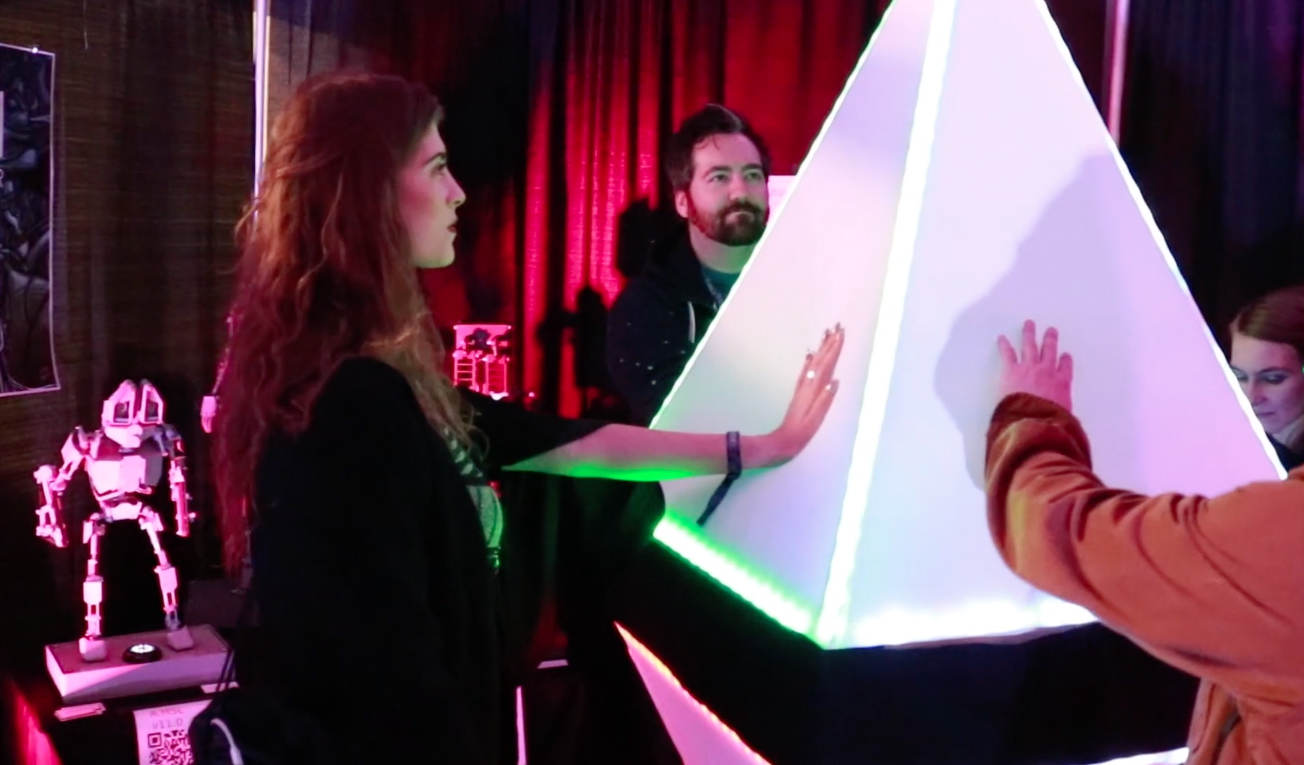
by ethanbach | Oct 4, 2018 | Highlights, Technology
Experiential design isn’t just a buzzword in marketing. Not only can it be effective for businesses trying to gain customers, there are many other creative uses for this artform. Experiential design is used in art shows, private events, and more recently, live music performances.
From Super Bowl concerts to experimental musicians, this practice is taking hold in the music industry for a variety of reasons. Live concerts aren’t just about the songs anymore. Concert-goers expect a full show, complete with visual entertainment and the opportunity to interact during the performance. While experiential design can be a major concert draw and build fans’ loyalty, it can be difficult to pull off for mobile designs. If you’re planning an experiential design for a concert or live performance, keep these three principles in mind:
Create elements that are on-brand and audience friendly
This should be somewhat obvious, but many designers focus on creating elements that “look cool,” yet are not on-theme with a brand’s message or persona. You must choose elements will add value to the live performance and will drive home the artist’s main message, persona, or theme of their tour. Album art or music videos can serve as great sources of inspiration.
Easy design and maintenance
Offering design elements that are easy to operate and maintain can solidify your relationship with an artist. If your equipment malfunctions or doesn’t operate as intended, no matter the reason, the artist will be disappointed and more likely to choose another partner for their next stage design. While you might have access to a tour technician, you still want to ensure the equipment is easy to use so that you can eliminate as much of the learning curve as possible.
Lightweight and durable
Custom fabricated lighting and set design pieces are some of the most difficult to create because they have to be mobile. You must choose your materials carefully to ensure they are easy enough for a roadie to transport, and durable enough so that if they are tossed around on the trailer, they won’t be permanently damaged. Using waterproof materials when possible is also a plus, making your equipment safe for outdoor concerts.
Recent projects
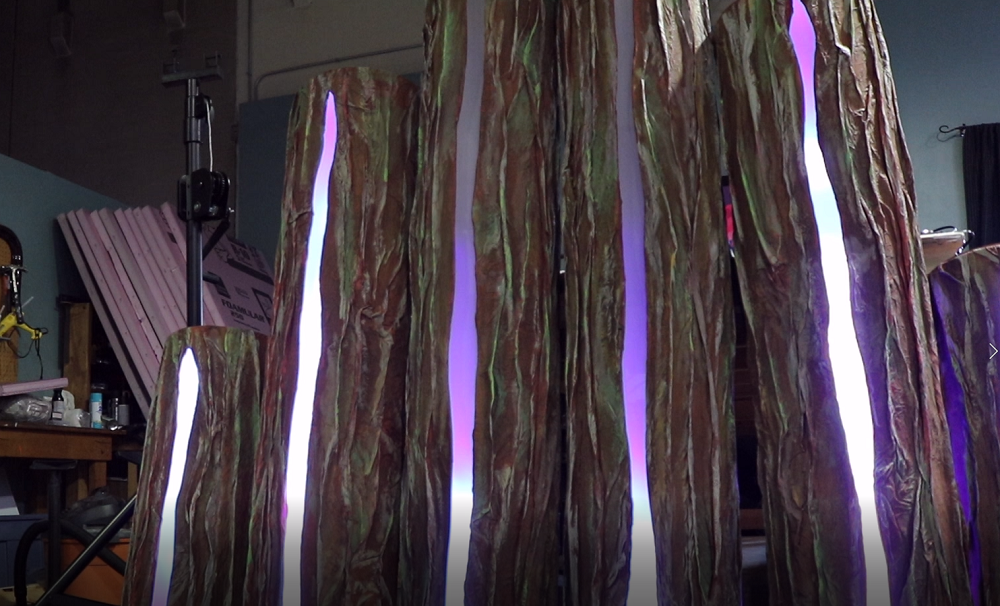
Just recently, AltEthos built a stage design for experimental electronic musician CloZee who draws on musical inspirations such as Tipper and Amon Tobin. CloZee incorporates intricate light and projection displays into her theatrical performances. We offered her several nature-inspired units using LEDs to cast changing light onto the stage.
Alt Ethos created several free-standing tree trunk units with muslin finish and placed an LED bar to shine through a frosted crack in the surface. The units contain a simple, detachable backboard for maintenance, and come in custom carrying cases for safety. You can view the finished design on our Instagram page.
We hope these interactive, colorful trees serve CloZee well on her 2018 tour, as using these three mobile design principles supported our stage design philosophy. For more information on how AltEthos does stage and experiential design, click here.

by ethanbach | Aug 22, 2018 | Community, Technology
For city planners and councils, constantly finding new ways to Improve a community’s economic and social growth is not an easy task. The best way to get people out of their homes and into the streets to interact with their neighbors and spend money at local businesses is to provide a unique experience that engages people of all ages. That is why communities are turning to experiential design events that use the new forms of art to attract hundreds of visitors and provide a major boost to the local economy. At Alt Ethos, we can help you make this type of event possible through the latest in modern entertainment and light art festivals. Learn more about this cutting-edge community experience and how to plan your own event:
If you have never heard of light art, or luminism, it is an art form where light is emitted from a sculpture to create a specific visual effect. Several light sources can also be used to create art on a surface. These techniques are often used in combination with local architecture for a highly visible final product. This type of art is creative, engaging, and a real crowd-pleaser.
While light art festivals aren’t yet commonplace, they are increasing in popularity as cities work to find new ways to attract visitors and engage residents. Hosting a light art festival in your city provides people a fun and interactive experience. It also puts your city “on the map” as destination for an extra-ordinary festival.
Tips for planning your festival:
- Determine a best location – Because light art is often created by projecting light onto walls and other outdoor “canvases”, you need to choose a location with an ideal architectural landscape to accommodate a variety of light sculptures.The Sydney Opera House is one example of a unique building that provides the perfect venue for light art and while also challenging artists. Not every city is home to such an architectural icon, so keep in mind that plain white buildings will also provide plenty of space and can be used for light sculptures of all kinds.

You also want to take other logistical factors into consideration. Be sure to choose a place where road closures won’t cause too much inconvenience and visitors will have plenty of space to safely walk and shop vendors.
- Create an application process – For your festival to be a success, you must invite a variety of light artists as well as other street vendors. Your artists are the backbone of the event while food trucks, charity organizations, and other vendors provide festival goers a variety of entertainment during their visit. Stick to an easy, clear application process that will streamline the organizational process of the festival.
- Direct your proceeds – Most festivals include a vendor or artist fee to join, which is an easy way to raise money and eventually sell sponsorships for your event as it grows in popularity. You can use these funds to improve your community, fund other festivals, purchase light projections, or support the arts in your area.
- Pick reliable partners – The more you are able to assemble a cohesive team, the better chances you have for success. Choosing partners for your website, event organization, PR, and other services will make the process easier and will ensure your festival continues to grow each year.
- Provide your own immersive experiences for guests – Artists and vendors will make your event unique, but as the event planner or sponsor you can add your own immersive experiences. Experiences like LED sculptures and digital domes are popular in light art festivals, and will keep guests passively entertained while they view and experience the art and other activities at your event. You may also consider taking projection mapping to the next level and consider placing interactive projection mapping over existing murals to increase engagement.
Alt Ethos is a leader in creating immersive light sculptures and experiential designs you can use to light up your city for an interactive light festival. These sorts of events are novel, exciting and sure to boost your city’s overall economy if well executed. We can help provide the infrastructure for your event with light displays, stage designs, and more. Contact us today to learn more and get started planning your event.

by admin | Aug 2, 2018 | Other
To say that the last two years at Alt Ethos have been a whirlwind of busy excitement would be an understatement. That is why we are taking a moment to slow down and look back at everything we have accomplished and where we are headed in the coming years. Here are just a few moments that made the highlight reel:
Looking Back
After months of brainstorming, planning and recruiting, Alt Ethos landed our first major client in early 2017. The project involved creating Soundscape for the Fort Collins Museum of Discovery. This first installation combined all of our passions: immersive projection mapping, interactivity, and spatialized audio and brought our vision to life.

Finding a New Home and Traveling
With plenty of passion driving us forward, we began producing lots of work and seeking new clients in several key markets. By this time, we had become full-time tenants at Commons on Champa. Our new home also became a client and we actually completed several installations in the space, including an interactive LED hallway. It was an amazing time for the company.
As part of our constant quest for new ideas and partners, Ethan traveled to the ix conference and Paul was off to the i/o conference to find inspiration and make connections. At the same time, we delved into the events industry with installations at both 5280 Magazine’s Anniversary Party, and Denver Startup Week.With each new experience, the company was gaining momentum and name recognition.
It wasn’t long before we moved our office to Prism Workspaces and celebrated with an open house. This most recent move has fueled our creativity and allowed us to expand our capabilities as a company.
Another milestone included a trip to Albuquerque in October to participate in the Creative Startups Accelerator program where we acquired a lot of new knowledge and workshopped various aspects of our business. This event helped us to developed a plan for the future and hone strategies that will take us to a whole new level. We found that this crash course/boot camp for creative businesses to be invaluable and we are constantly referring back to things we discovered and learned during our time there.
Notable Projects
Taking this newfound knowledge and inspiration, we started blazing a trail to what we now separate into two categories known as Events and Environments, which has resulted in partnerships with a myriad of new events.
Some highlights include:
- Creating a 20’ tall lion sculpture for Gari Safari’s Halloween at the Church Nightclub. This project involved create a 3D rendering that was then turned into a physical object that included two moving heads and laser beams that projected from the mouth. It was quite a treat for party goers.
- Installing our Balloon Hive in the form of a DJ booth for Meow Wolf’s Denver Announcement party. Different size balloons were attached to a wall and used as a projection screen that totally transformed the room. This same concept can be used in practically any space with stunning results.
- Developing a fabric instrument that was showcased at two cryptocurrency conferences; ETHDenver and Token Fest. This interactive display not only created a conversation piece, but played a vital role in starting conversations and encouraging hackers to connect and collaborate.

Celebrating Our Second Anniversary in Style
To mark our second anniversary, we hosted an annual talk at The Commons on Champa, Denver Vision. As part of the night’s lineup, Ethan gave a keynote address and hosted a panel inspired by his blog article “The Meow Wolf Effect”. The event was a success and has spawned a series of meetings designed to keep the conversation going when it comes to fostering creative technology in Denver and its surrounding areas. Be on the lookout for more updates regarding these efforts in the coming year.
Since our anniversary, we have been working hard on creating more great experiences for people. We are continuing to push forward on our rental product line and beginning to offer more and more ready-to-deploy installations catered towards events of all kinds. Check out our rental page for more details about what we have to offer.
Our partnership with the Downtown Development Authority of Fort Collins, Colorado is also in full swing. This project will augment a mural painted by Italian artist Peeta, with interactive animations. During the day, visitors to Old Town will enjoy the amazing work of Peeta and at night the mural will come to life, tracking visitors who move through the space to influence the animations. Keep your eyes out for more details on this project as we move forward.

There are a lot of other irons in the fire, projects in development, fun being had, and coffee being consumed here at the Alt Ethos Studio. After looking back at all we have accomplished so far, I can’t even begin to imagine where we will be at this time next year. We will continue to bend reality and challenge perceived limitations in new and exciting ways. If you are interested in hearing more about our work, feel free to contact us. We never tire of talking to people about what we do and our vision for the future.

by admin | Jul 10, 2018 | Case Studies
Creating an interactive fabric instrument that brings the Ethereum community together.
Background
The largest Ethereum hackathon in North America was looking for interactive ways to bring the Ethereum brand to life for their audience. The organizers had kegs of Kombucha, artisan food trucks, an art zone, and 1000 eager developers ready to progress the Ethereum ecosystem, but they still needed more experimental expressions of Ethereum and the arts to stimulate the imagination of their audience. To address this need, Alt Ethos transformed the three-dimensional Ethereum logo into a physical instrument that could be played by touching various lycra surfaces, allowing users to explore new possibilities at the intersection of experimental sound design and cryptocurrency.
Objectives
1.Connect strangers through a physical installation that fosters conversation and inspires new relationships.
2.Spark the imagination of the developer community through an interactive Ethereum experience.
Solution
Step 1: User Experience Research
The journey began with thorough user experience research to better understand possible manifestations of the Ethereum ecosystem in the physical realm. Through studying fundamental components of the blockchain, the ethos of the Ethereum community was identified as inquisitive, inclusive, and fully open to embracing experimentation and seemingly wild ideas. Paired with an understanding of the unique social dynamics of hackathon environments, the Alt Ethos team strove to create an experience that would spur further connections and conversations among strangers in the community.
Step 2: Design
The design phase highlighted that the three-dimensional form of the Ethereum logo presented an opportunity for two explorers to collaborate by taking advantage of the four unique faces on the floating diamond. The sound design specifically accentuated different tracks and audio synthesis methods in the musical composition when the user pressed two hands on two faces of the instrument. The intention was for the musical composition to grow and find a sense of synergy as another user pressed the remaining two faces, thus creating an intimate setting for two people to openly play together.

Step 3: Development and Testing
The development and testing of the exhibit occurred in a series of sprints. The major benefit of the sprints was iterative testing of the sound and light curation to ensure that the audio synthesis techniques on each face of the diamond smoothly integrated into a cohesive aesthetic. Using continuous data feeds from time of flight lidar sensing technology enabled the installation to become a low latency interactive experience, which was essential to forming a playable instrument with an instantaneous feedback system.
Step 4: Implementation and Delivery
The fabrication of the structure was purposefully modular in nature to allow for an easy take down, setup and transportation. The design of the software and firmware of the installation was automatically configured to allow for a simple two-step process to turn the installation on. After the pieces were put in place, all it took was for the power cable to be plugged in and the “on” button to be pressed to complete the setup process.

Step 5: Evaluation
After the implementation and delivery, the installation was a focal point of the art zone and acted as a key interactive tool in connecting members of the community through shared experimentation and a sense of discovery. When members of the audience watched others touching and listening to the instrument, they were inspired to come up and ask other members of the audience what they were doing. In teaching each other about the installation, the observer turned into an active participant and player often using the installation as an ice breaker to form a connection with another attendee.
Conclusion
Alt Ethos was able to create an interactive display that reinforced branding, addressed the unique environment of an Ethereum hackathon and encouraged participants to form new relationships through exploratory play. The system provided a creative solution that was able to get participants conversing and with a design that makes it easy to setup and install, the device has the potential to continue to engage audience members in the future.

by admin | May 22, 2018 | Case Studies, Community, Other, Technology
Creating a high engagement museum exhibit with the Fort Collins Museum of Discovery
Background
The Fort Collins Museum of Discovery was looking to activate an old exhibit space into an engaging experience, so they turned to Alt Ethos to create a lighting instrument. The previous exhibit displayed a looped video about the music scene in Fort Collins with a set of couches for visitors to sit to watch the video. The exhibit was passive; they wanted an environment that captured visitors’ attention and pushed deeper engagement.

Fort Collins Museum of Discovery
Objectives
1.Create a unique instrument playable by multiple people at the same time.
2. Turn the space into an active experience that engages people of all ages.
Solution
Step 1: User Experience Research
The team began the journey with user experience research to better understand the community that enjoys the museum and the relationship between the vision of the organization, personas of the users, dynamics of the space, and interactions that connect people to the space and vision.
Step 2: Design

Paul and Ethan take a meeting to learn about the museum’s needs.
The design phase highlighted that the tucked away location of the piece was a unique opportunity to engage “sweater holder” parents as well that don’t often interact with the exhibits choosing instead to watch their children and sit off to the side.
The ideal interaction time was approximated around five minutes to ensure adequate flow throughout the other exhibits. The team moved forward with wireless sensing technology located overhead in the room to maximize the life of the exhibit by basing the interaction dynamics off of the position of audience members in the space.
Step 3: Development and Testing

A child dances among the lights, activating new sounds in the space.
The development and testing of the exhibit occurred in a series of sprints. The major benefit of the sprints was iterative testing of the sound curation because in generative sound environments it can be easy to be swept into a cacophony of sound.
Tuning the parameters to limit key aspects of the sound design along with smoothing sensor data was a major breakthrough in the design that pushed the aesthetic of the installation.
Step 4: Implementation and Delivery
Alt Ethos installed the installation over the course of two weeks ensuring that any major physical changes to the environment took place on the Mondays when the museum was closed.
An essential factor in a smooth delivery was remote access to the computers allowing for the team to make changes and improve the software while not onsite. This allowed for a faster delivery time and for changes to take effect rapidly during the installation phase.
Step 5: Evaluation

What formerly was a passive exhibit is now an active space for all ages.
The use of wireless sensing technology also meant that as soon as a person enters the space, they became part of the musical composition. After the implementation and delivery, this dynamic was identified as a key variable in converting passive adults to active participants in the museum experience.
Doing so created an environment ripe for more connections to the space that involved the whole family thus driving more memberships, donations, and buy in from the adults in the local community.
Read more about the space that we use to create our installations.


